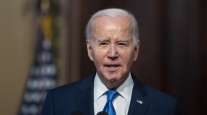Senior Reporter
A New Era in Global Trade

[Stay on top of transportation news: Get TTNews in your inbox.]
Ongoing trade negotiations among the United States and many of its key global trading partners have ushered in a time of change and uncertainty for many international shippers and, by extension, the transportation firms that move their freight.
The ultimate outcome of this realignment of trade policy remains unclear, but the United States has reached a tentative agreement with Canada and Mexico, and appears to be making progress toward a resolution with China.
After more than a year of tough talk and economic sanctions between Washington and Beijing, the nations on Oct. 11 announced the first significant achievement in the 18-month trade battle between the world’s largest economies.
Details of the agreement were not released, but the White House said it has agreed not to move forward with plans to hike tariffs on $250 billion in Chinese goods, to 30% from 25%.
President Donald Trump said the Chinese would buy $40 billion to $50 billion worth of American agricultural products annually, along with implementing new guidelines on how it manages its currency. He also said the “Phase 1” agreement would strengthen Chinese protections for American intellectual property and give financial services companies more access to China’s market.
The president said he had not made a decision yet concerning a looming Dec. 15 deadline for additional tariffs against Chinese products.
Experts who spoke to Transport Topics said the United States is clearly at a crossroads regarding trade with China.
“I am not optimistic, but I am not overly pessimistic either,” said economist Paul Bingham, director of transportation consulting at IHS Markit. “Clearly, there is some kind of strategy underway on both sides, in terms of their positions with the negotiations.”
But Bingham said he doesn’t believe tariffs are the best way to get China or any other nation to change its trade policies. And in the end, he said, the consumers pay.

Some shippers are adjusting their supply chains amid the U.S.-China trade war. (Port of Los Angeles)
“Tariffs are passed through to the shelf prices, which results in inflation for those goods and for the consumers, having to face either buying less of them or shifting around their income to things they spend their money on,” he said.
Attorney David Spooner, of law firm Barnes & Thornburg in Washington, specializes in trade issues and worked at the U.S. Commerce Department and the Office of the U.S. Trade Representative. He has negotiated agreements with the Chinese and expects the talks to continue well into 2020.
“I am optimistic that we will work something out with China, eventually,” Spooner said. “On the U.S. side, we have our presidential election next year, and I think it’s important to the agriculture community that we resolve things with China. And on the Chinese side, I think you’ve heard about the slowdown in the Chinese GDP. I think the optics will be important for China. They want it to look like a win-win for both sides, and I think the Chinese very much want an agreement.”
Other economists say the trade battles have caused instability, and markets don’t like uncertainty.
“I need something to happen with the trade deal. I’m not saying we’re going to have the trade deal with China, but what I am saying is we need stability,” said Rajeev Dhawan, director of the Economic Forecasting Center at Georgia State University in Atlanta. “But there is no such thing as a deal until the man in the White House has spoken. So any other statement that we are close to a deal, we have a deal, I don’t believe anything. I want to see some clear points that say this is it.”
Amid the uncertainty over trade, 2019 has been another booming year for the nation’s ports, and several facilities have been setting records.
In many cases, shippers are bringing goods into the United States as soon as possible to avoid newly imposed tariffs in the event talks break down.
Higher volumes at the ports mean more trucks shipping items to warehouses and stores and making e-commerce deliveries.

Trucks line up at the Port of Los Angeles. The LA-Long Beach port complex is North America's largest gateway for container cargo. (Nick Ut/Associated Press)
The Port of Los Angeles said it processed 7,091,776 20-foot-equivalent units through the first nine months of 2019, a 3.7% increase over last year’s record pace at the nation’s busiest port.
Nonetheless, port officials have issued a stern warning to Washington.
“The ill-advised U.S.-China trade war continues to wreak havoc on American exporters and manufacturers,” Port of Los Angeles Executive Director Gene Seroka said. “We’ve seen declining exports for 11 consecutive months while our fastest-growing market segment is exporting empty containers back to Asia.
“It’s likely we’ll see softer volumes in the fourth quarter. We must have a negotiated settlement of the trade war as it is beginning to impact the more than 3 million jobs in the U.S. that are tied to this port complex.”
On the East Coast, the Port of Savannah is running 6.9% ahead of 2018’s record pace, having processed 3,076,998 TEUs through Aug. 31.
While the U.S.-China negotiations have been generating the most concern and attention, new trade agreements with other nations also may dramatically change the business landscape for international commerce.
An updated agreement for cross-border trade with Canada and Mexico likely will have more impact on the trucking and freight transportation industry than the U.S.-China trade war. According to the International Trade Administration, U.S. trade with Canada and Mexico is almost double the country’s imports and exports with China.
This new U.S.-Mexico-Canada Agreement that is now before Congress would replace the North American Free Trade Agreement, which opened the way for a wide variety of products to cross borders and grow the economy of the three nations since it went into effect in 1994.

Trump (center) reaches out to former Mexico President Enrique Peña Nieto (left) and Canadian Prime Minister Justin Trudeau prior to signing the pending United States-Mexico-Canada Agreement. (Martin Mejia/Associated Press)
For example, Mexico is the only place in the world that grows a significant supply of avocados year-round. The country, as a result, supplies 45% of the global avocado market. A Texas A&M University study found in 2015 that avocado imports have helped to create about 19,000 domestic jobs along with $600 million in tax revenue.
Bob Costello, chief economist at American Trucking Associations, said the trucking industry has seen an increase of $6.5 billion in annual revenue because of NAFTA, and 31,000 truckers rely on contracts that were made because of the agreement.
Industry leaders who have read the USMCA believe its ratification is essential if the freight industry is to continue its growth trajectory.
“Free trade is fundamental to trucking,” said Bill Sullivan, ATA’s executive vice president for advocacy.
A strong economy and strong global trade mean “more trucks rolling,” he said.
ATA has been pushing Congress to approve the pending USMCA agreement.
“USMCA is clearly an improvement on NAFTA in terms of a number of technical things, but also labor standards, intellectual property, and a number of different ways it has been updated because it’s a more than 20-year-old agreement,” Sullivan said. “A lot of North American and Central American trade has really ridden on the back of NAFTA, which has produced a lot of jobs in this country and jobs in the other countries as well.”
Much like the U.S.-China trade negotiations, where both sides know a national election will take place in 12 months, the path forward for the USMCA also will involve politics. The agreement must pass both houses of Congress, and because it is a treaty, it will require a two-thirds vote in the Senate.
While House Speaker Nancy Pelosi has said publicly she wants to get the agreement to the House floor for a vote, some Democratic House members might be reluctant to vote in favor of the deal because it would give Trump a major victory heading into the election campaign.

Pelosi discusses the House impeachment inquiry into Trump. (Andrew Harnick/Associated Press)
“I think if it gets through the House, I think it will go. The commitment of the speaker and the committee chairs working on this has been exemplary,” ATA’s Sullivan said.
Meanwhile, AFL-CIO President Richard Trumka has warned that the USMCA will go down in defeat if the Democratic-controlled House of Representatives rushes the debate and votes before Thanksgiving.
Pelosi and her negotiators have said they want to resolve concerns about the deal harming American workers or the environment before they ratify it. However, Trump said on Sept. 25 that an impeachment inquiry against him could derail congressional approval of the USMCA. He has said ratification is a top political and economic priority ahead of the 2020 election.
On June 20, Mexico’s Senate resoundingly approved the USMCA by a vote of 114-3, with three abstentions. Mexico’s ratification procedure will be completed when President Andrés Manuel López Obrador announces its approval.
In Canada, it is expected that the treaty will be reintroduced in Parliament later this year.
One thing is certain — trade fuels the world’s economy, and freight and trucking are a crucial component. Finding the sweet spot in terms of completely free trade, trade with tariffs, or trade barriers always has been a challenge for elected officials, and some economists have likened the process to “tuning a piano while wearing boxing gloves.”
Right now, the politicians have their hands deep into the piano.
Want more news? Listen to today's daily briefing:





